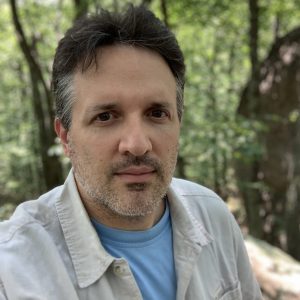In 1760, about 30 years before construction began on the White House in the District of Columbia, a Mennonite settler named Martin Kauffman II built his own little White House in Page County, Virginia.
Kauffman constructed the building as a residence and Mennonite meeting house, locating it at the foot of the Massanutten Mountains, along the South Fork of the Shenandoah River, within the original 5,000-acre land grant that became the first European settlement west of the Blue Ridge in Virginia. The settlement was called Massanutten, which locals say is an American Indian word for “Great Mountain Yonder.”
Other buildings were added to the farm over generations, but the little White House — and the now remaining 270 acres of fertile farmland surrounding it — are today intact.
In 2005, Scott Plein and his family purchased the farm. Recognizing the rich natural resources on the farm — karst ponds, limestone outcroppings, USDA-designated Prime Farmland soils, and high bluffs along almost a mile of the South Fork of the Shenandoah River — he donated a permanent conservation easement to the Virginia Outdoors Foundation.
Plein’s desire was to restore the White House and use it to tell the story of the early history in the Valley. He also wanted to build the farm as a model of sustainable land use. So, he formed an environmental education and research center on the property, named it the White House Farm Foundation, and hired Chris Anderson of Luray as its executive director.
Since then, the Foundation has engaged numerous partners on projects that blend sustainable land use with environmental protection. It has enrolled in the Smithsonian’s Working Landscapes project, which helps farmers enhance biodiversity on working lands. It has worked with the Virginia Department of Forestry to conduct controlled burns in riparian areas. It maintains a fruit orchard and garden dedicated to heirloom varieties. It has also allowed local high school students to install wildflower demonstration sites along the river, practice mapping and natural resource inventorying skills, and use one of the farm ponds as a special study area, planting a variety of shrubs to help protect water quality and stabilize the soil.
Most recently, the Foundation has formed a partnership with the Virginia Tech Conservation Management Institute (VTCMI) to study native warm season grasses. The VTCMI will utilize the Foundation’s warm season grass habitat restoration site as a comparison to a nearby warm season grasses biofuel planting at the Merck, Sharpe, and Dohme Stonewall Plant in Elkton. Virginia Tech students and VTCMI staff will monitor both sites to compare avian abundance and diversity between the two types of plantings.
According to Anderson, the foundation uses the data it collects from all of these projects to determine whether they are benefiting biodiversity. “We use the farm as an outdoor laboratory,” she says. “Each project builds on the last.”
